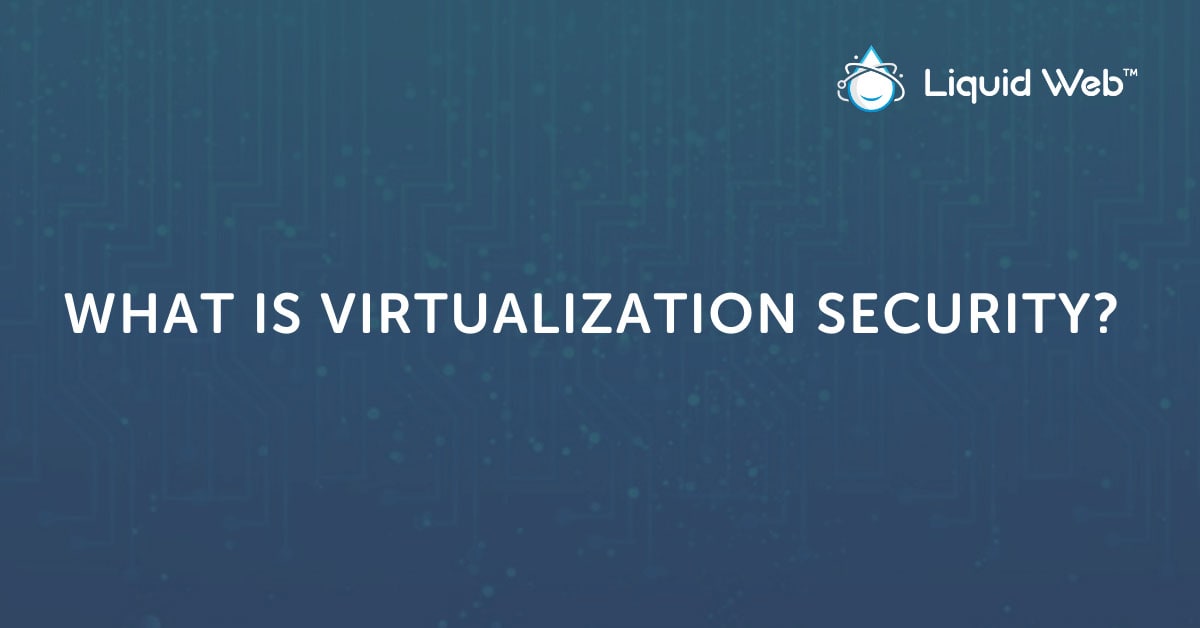
The scales are tipping—and soon enough, most network servers will be virtualized. On the one hand, this means cheaper infrastructure and maintenance as well as agility for enterprise networks. On the other hand, it also means that legacy hardware-based security solutions (e.g., traditional firewalls, routers, switches, etc.) are becoming outdated.
As your organization adopts virtualization, it’s important that it also adopts virtualization security and cloud security to help keep your network, sensitive data, and users safe in a virtualized environment. Keep reading to learn all about virtualization security, including its benefits, the risks involved with going virtual, and the best practices for security virtualization.
What is Virtualization Security?
Virtualization security (also known as security virtualization) is a software-based network security solution built to protect virtualized IT environments. Virtualization—or deploying software-based security such as next-generation firewalls or antivirus protection in place of hardware—is quickly becoming the main way organizations build out their network infrastructure.
- Server virtualization.
- Desktop virtualization.
- Storage virtualization.
- Network virtualization.
- Application virtualization.
Deploying rigid hardware-based network security solutions doesn’t provide comprehensive protection in virtualized environments. Instead, you must implement a flexible, dynamic virtual security solution to match your new infrastructure needs.

How Does Virtualization Help Security Risks?
Virtualization and security go hand in hand, as there are inherent security advantages baked into virtualization. For example, virtualization allows for data to be stored in a centralized location rather than on unsanctioned or insecure end-user devices.
Other positive effects of virtualization security include:
- Granular Access Control: IT teams and admins have much more control over network access than with a legacy hardware-based infrastructure. Teams can use micro-segmentation techniques to grant user access to specific applications or resources at the workload level.
- Application Isolation: A key security benefit of virtualization is the ability to isolate applications from one another on the network. Keeping apps isolated can protect data from being shared across them, or from malware or viruses that may have infected other parts of the system. Isolation is often accomplished via containerization and sandboxing.
- Increased Control Over Desktop and Application Updates: Operating systems (OSs) and applications are constantly going through security patches, but your employees might not be keeping up with these updates on their devices. By virtualizing desktops, IT will have full control to ensure OSs and applications are updated.
- Virtual Machine (VM) Isolation: Running several virtual machines on a single server allows for a high level of isolation. If security is compromised within one server, this separation provides protection for the other virtual servers.
- Network Isolation and Segmentation: Independent workloads or apps on a network can be divided and shared across segmented virtual networks that are isolated from each other. This ensures that information and access aren’t shared across the entire network.
- Hypervisor Maintenance: Hypervisors that create and run VMs typically require fewer resources than hardware-based solutions, giving them a smaller attack surface. Plus, hypervisors usually update automatically.
Does Virtualization Pose Any Security Risks?
While there are several security benefits to virtualization, there are also a few inherent virtualization security issues that you should be aware of. These risks include:
- Increased Complexity: Virtualized environments can be complex, especially as several workloads and apps are migrated across different servers. This makes it more difficult for IT teams to follow virtualization security best practices and maintain consistent policies or configurations across the entire network.
- Virtual Local Area Network (VLAN) Vulnerabilities: When using VLANs, network traffic is routed from the hose to a firewall, which can lead to network latency. Additionally, communication between multiple VMs on a VLAN cannot be inspected, rendering it insecure.
- VM Sprawl: VM sprawl occurs when there are unused and unaccounted-for VMs present in your system. Because VMs are so easy to deploy, many IT teams spin-up too many of them—often deploying one for testing purposes and not deleting it after it’s no longer needed. Unused VMs are often ignored and don’t receive security updates, leaving them unpatched and vulnerable to attacks.
- Distributed Denial of Service (DDoS) Attacks: Regardless of their isolation, VMs running on the same server share that server’s resources (e.g., CPU, RAM, and memory). If a DDoS attack is flooding a VM with malicious traffic to compromise its performance, other VMs on the server will feel the effects.
- Hypervisor Attacks: While hypervisors have relatively small attack surfaces, they can still be compromised. If a hypervisor is successfully attacked, all VMs running on the same server are at risk. This gives attackers a centralized point of access to target. In addition, hypervisor admins oversee their security credentials, which means a malicious insider could share these credentials with anyone.
Your organization’s cloud infrastructure could also introduce inherent network security risks—compounding the risks associated with virtualization.
10 Tips for Developing a Virtualization Security Policy
Security virtualization will help keep your organization’s systems secure, but virtualization alone will not get the job done. It’s important that you set up a clear and actionable virtualization security policy. These are some of the best practices for virtualization security you should adopt:
- Make sure your hosts are running the latest firmware and that all software is updated regularly.
- Ensure firmware for all active network elements is up to date.
- Set up automatic updates for all OSs with installation and reboots scheduled for off-hours.
- Install virtualization antivirus and antimalware software and ensure it’s kept updated.
- Clearly divide administrator privileges to easily track who has changed what across the system, and follow the principle of least privilege (PoLP) for each admin.
- Make sure that all network traffic is encrypted.
- Have a clear user policy and train employees on best practices for password security.
- Ensure that all VMs have a clear purpose. Delete all unused VMs.
- Schedule regular backups for your VMs and physical servers, as well as full system backups.
- Review and deploy VMware best practices for security.
Enhance Virtualization Security with Liquid Web
By deploying these best practices and taking advantage of the benefits inherent in virtualization security, you can rest assured that your organization will remain secure as you gain all the benefits of virtualization, such as agility and reduced overhead.
Ready to enhance virtualization security by switching to a cloud provider you can depend on? Learn how you can leverage Managed Private Cloud hosting from Liquid Web to help secure your virtual environments and streamline operations today.
[ad_2]
Source link







